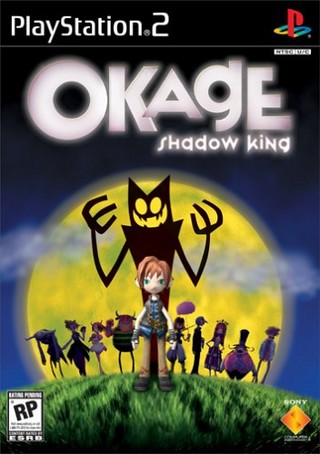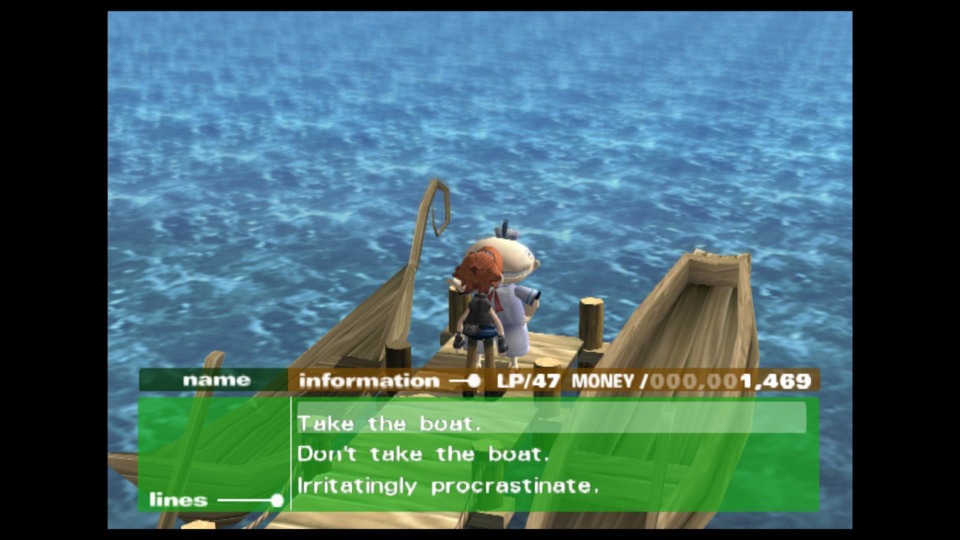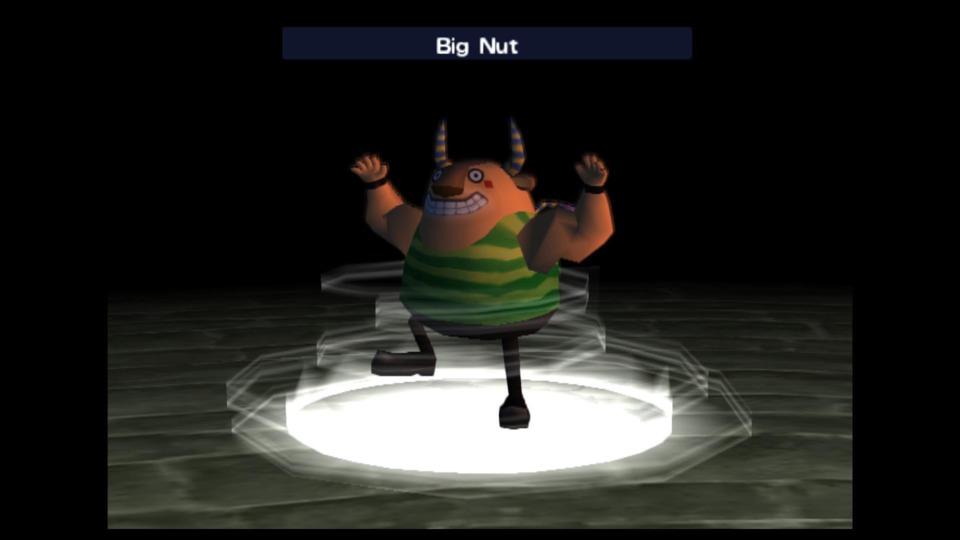Bucketlog March: Okage: Shadow King
By Mento 2 Comments
Welcome to the Bucketlog! It's going to be 2019's year-long blog series, focusing on games I've been meaning to play since forever. I've put together a list derived from a mix of systems, genres, and vintages because it's starting to look like 2019 might be the first "lean" year for games in a spell (though time will tell whether that pans out to be true) and I figured this would be a fine opportunity to finally tick off a few items I've had on my various backlog lists/spreadsheets for longer than I'd care to admit.
March

- Game: Zener Works's Okage: Shadow King.
- System: PS2 (via PS4).
- Original Release: 2001-03-15.
- Time from Release to Completion: Eighteen years and sixteen days.
It's been fifteen months since I wrapped up The Top Shelf: a feature wherein I reviewed my entire PlayStation 2 library for the forty-four games that best represented both the system's deserved status as the most successful video game console of all time and my own time spent with same. However, even after processing through some 185 games, it was this bonus feature that highlighted just how much of that system I had left to discover at some future point of my life. One of those games that I neglected at the time (though in my defense, it would be more accurate to say Sony Computer Entertainment Europe was the one at fault for never releasing it here) was Zener Works's cult JRPG Okage: Shadow King.
Released in March 2001, preceding the wave of bigger JRPGs that would define the system in its early years like Final Fantasy X and Kingdom Hearts, Okage was a deliberately off-beat game that perhaps arrived at a time when the world wasn't prepared for it. The graphics were rough, the load-times were obscene (due to the game being a CD-ROM, as many early PS2 games were), the combat is just rudimentary, and the camera is terrrrible - and these are all faults that have only become more pronounced over time. It was also too smart-mouthed by half, deconstructing the tenets of the JRPG genre for the sake of a subversive and silly story about cartoonishly evil kings, stuck-up heroes, and the world of relatively minor NPCs that surround them.
However, as was the case for Schwarzenegger's Last Action Hero - another meta exercise that grated in its day but is more fondly received now - it's that unusual meta edge in conjunction with an almost Henry Selick-esuqe macabre personality that has allowed Okage: Shadow King to enjoy the sort of low-key cult appeal that would, eventually, afford it the rare privilege of joining a handful of other PS2 games on the PlayStation 4 as part of the PlayStation 2 Classics range. There's nothing quite like it elsewhere on the PS2, after all, and that became a quality all the more valuable as the system saw hundreds of cookie cutter JRPGs pass through its gates.

Okage: Shadow King's protagonist is a player-named boy (the default is Ari) who is presented as something of a face in the crowd; someone who has never stood out, has never really been assertive or courageous in the eyes of his peers, and frequently allowed others to take the limelight. This is lampshaded early on when he realizes that his girl-next-door childhood crush also reciprocated those feelings, though not because she saw his inner depth and strength of spirit but rather because she wanted a pushover milksop of a husband that she could manipulate and exploit to her heart's content. It's only when Ari's sister Annie becomes the recipient of a "pig-latin curse" by the Evil King Stanley Hihat Trinidad XIV (Stan for short) and Ari jumps on the grenade by allowing the ghostly Stan to assume his shadow that Ari himself starts to change for the better, becoming more confident in spite of his new forlorn status as the eternal slave of a demonic tyrant. Ari then meets and recruits other eccentric characters, including the closest this world has to a protagonist - Rosalyn, the parasol-sporting hero-for-hire - whom the game spends no time in establishing as the pivotal protagonist of this world, rather than some quiet kid with a monstrous shadow following him around. This subversion is cleverly echoed by the game's story itself, which begins as a quest to recover Evil King Stan's powers by defeating colorful "Evil King pretenders", like a Fish Evil King, a Sewer Evil King, a Chairman Evil King (which is a goof that still very much plays today), a Teen Idol Evil King (despite being female), and a flamboyant Phantom Evil King - however, the true culprit is revealed in one of the game's more surprising twists, which for a time transforms the protagonist into someone so inessential to this world of heroes and demons that he might as well not exist.
However, even outside the art style and meta story, the game has this strange mix of clever mechanical innovations and some really tedious dungeon-crawling and turn-based combat that helps to cement its status as a true one-off in the lengthy history of this genre. The combat uses a variant of Final Fantasy's classic active time battle system, where enemies and player characters trade blows in real-time but with tactical pauses to allow the player to assign actions. Meanwhile, the character progression and experience point system is borrowed straight from Suikoden: every level-up requires 1000 experience points exactly, but the amount you earn from a battle is dependent on the enemy's strength relative to your own. This was a system devised to allow Suikoden's many playable characters to quickly catch up to the current area's enemy level, as well as the level of their more long-term companions, but it occasionally appears in other games too. In a very old-school move, many enemies move in "stacks" rather than as separate entities, and single-target attacks against enemies within those stacks are randomly distributed. You can also cast group spells which affect everything within a single stack. The most unusual, and kind of smart, choice by the game's combat design is to pool the entire party's mana together as one stat that everyone can access: this allows the party's healer (usually the protagonist) to channel most of the party's total magical power towards restoration, if necessary.
Other elements that have helped the game's preservation is a lack of random encounters - enemies will spawn on the overworld and can be avoided, and the "escape battle" function is very reliable also in case evasion is impossible - and the fact save points replenish all health, allowing low-level players to grind near one if needed. Enemies stop spawning in dungeons once you've cleared a floor's "urn" enemies, each of which stays put and needs to be sought out and destroyed to make progress. It's a relatively short game also: it took me about 40 hours to complete, though without the idling and occasional grind sessions for trophy-related purposes I might put it closer to 30.

Of course, there are areas where the game hasn't aged well at all. One of these is a lack of direction in some areas where you need to talk to the right townsperson to trigger the next event, or the aforementioned terrible camera that regularly gets stuck behind walls and other scenery and can't easily be raised or lowered manually but will occasionally automatically glitch to different and sometimes more preferable bird's eye positions. Weaker enemies will still constantly spawn around you in low-level areas, and there's no quick battle function that I could find to speed up these pointless encounters. The best weapon in the game requires completing a fetch quest where the invisible collectibles could only be found by contour-hugging the game's few overworld field maps. I might also say that they could've taken another run at the localization at some point; for 2001 standards it's probably around average, but there were times where a line or clue got lost in translation or an alternative to some obscure Japanese joke (it is a deliberately funny game, after all) landed with a thud.
Overall, I think Okage would've been the type of JRPG I adored in its day for its divergent choices, its aesthetic, its subversive humor, and its novelty value. Now, it's more the case that I am only able to appreciate its core appeal through several obfuscating layers of antiquated (but still occasionally brilliant) design and unpleasant early-PS2 graphical coarseness without the benefit of nostalgia goggles smoothing the rough edges off. There are still plenty of PS2 games I hope to see before too long, not least of which are Grandia III and Tales of Legendia, but Okage: Shadow King is an odd little game without a whole lot of presence here in Europe that I was glad to have finally seen for myself.
